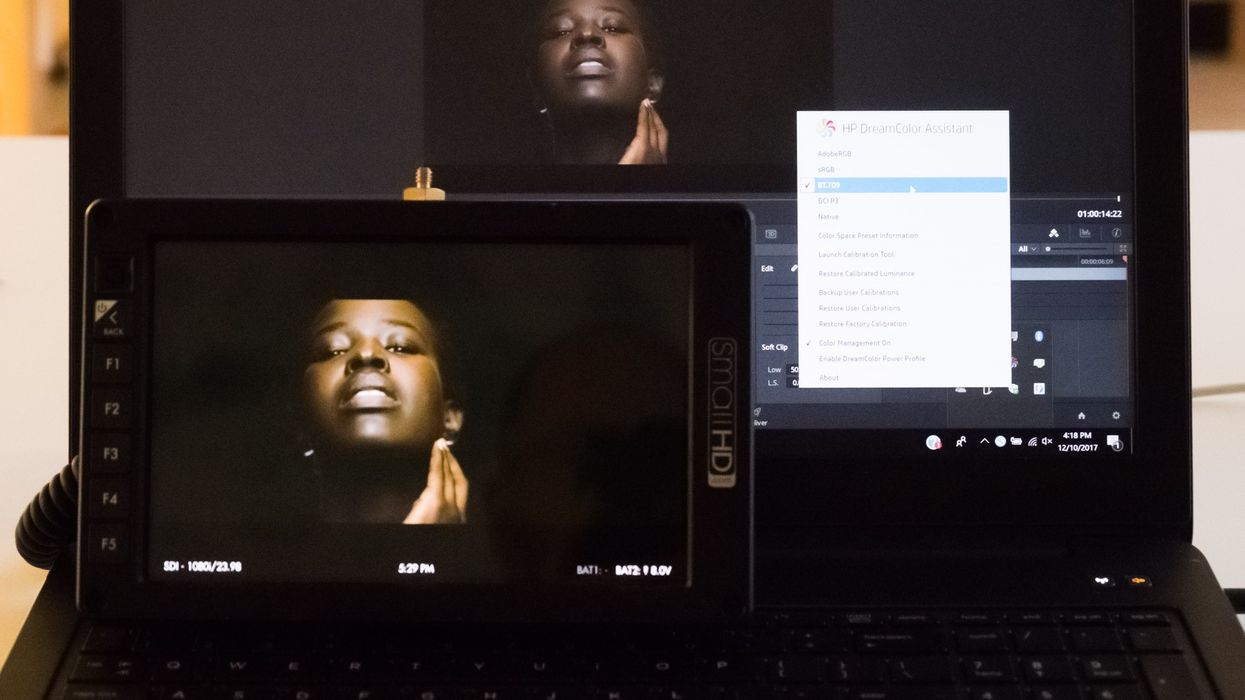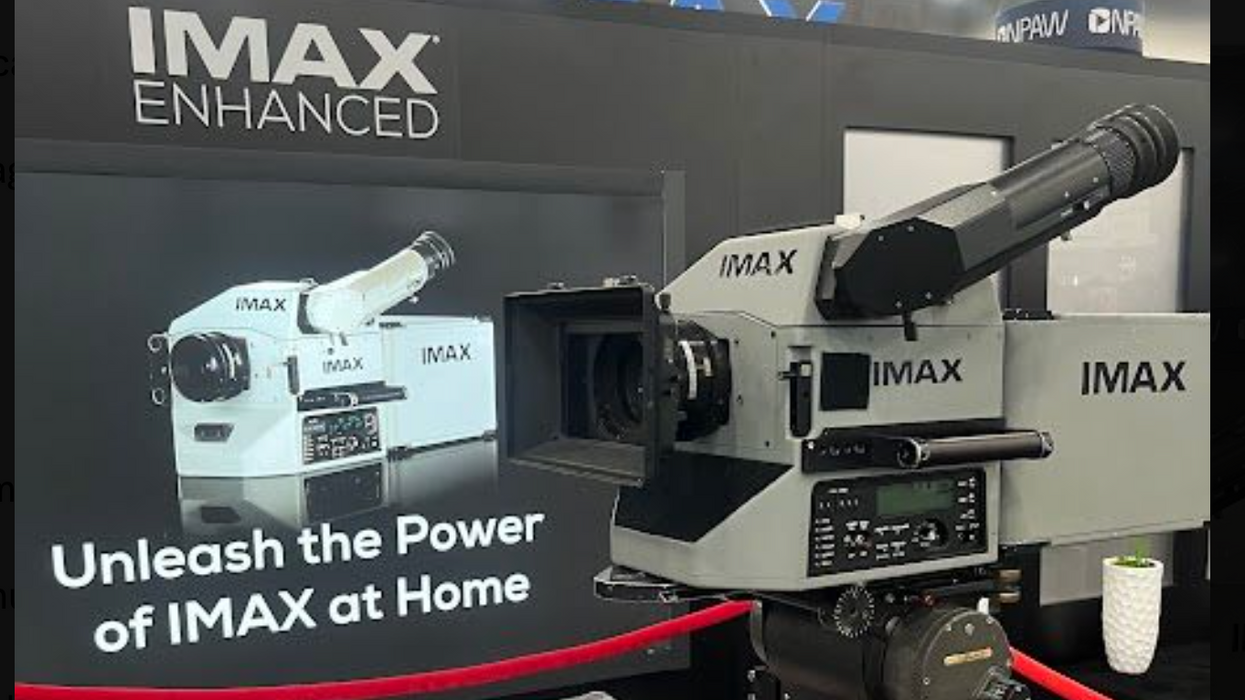Can We Switch to PC DIT Laptops Now? The ZBook from HP
Mac laptops continue to dominate low budget DIT stations on set, but the HP ZBook 15 G4 makes a case that we might be ready to switch.

While they have never had the same power-for-price ratio that PCs offered, Macs have dominated the world of on-set download stations for the last decade for a few key reasons. First, for a long time, Final Cut Pro, which required a Mac, had a large footprint in professional post. On top of that, the variety of ports on offer and the convenient form factor made it unlikely that you'd ever run into a situation where your external drives didn't fit. Get to set and discover that the producers bought FireWire 800 drives when they said they were buying USB? Or USB 3 when they promised Thunderbolt? Mac had you covered.
A DIT station with a massive graphics card, a wide variety of ports, and the ability the run all of the biggest software is increasingly appealing.
But with the disappointing performance and lack of port variety of the newest generation MacBook Pro, and the move away from Final Cut Pro to Premiere, Resolve, and back to Media Composer, many filmmakers are seriously considering switching, with the tremendous amount of power available in a PC chassis looking more and more attractive. As PC makers fit full size gaming cards into laptops (hell, Microsoft has stuck one in a tablet's keyboard), the idea of a DIT station with a massive graphics card, a wide variety of ports, and the ability the run all of the biggest software (Creative Cloud from Adobe, Resolve from Blackmagic, and Media Composer from Avid are all platform neutral and run fine on Windows) is increasingly appealing. We continue to mostly see earlier generation MacBook Pros (as old as 2013 units) used for on-set work, but PCs are starting to show up, certainly more often than the new MacBook Pro.
HP is hoping to get a taste of this market with its ZBook 15 G4 Mobile Workstation. While the laptop doesn't offer a full sized gaming PC card, it does have a powerful graphics card, a wide variety of ports, and is clearly designed with the idea of power use on the road in mind. It's not a "beautiful" case the way the Macbook Pro is, but it doesn't need to be; this isn't a lifestyle accessory, it's a professional tool, and while it has to be large to house all that power, it's not unattractive. But beauty and unnatural thinness aren't the point. Doing your job is. To that end, this laptop also comes with a DreamColor monitor.

DreamColor Monitor
"DreamColor" has been HP's brand for color-accurate monitoring for a long time now. While you don't see them that widely in video post suites, you do see them all over photography, and a desktop DreamColor was the first computer monitor that we know of to offer a Rec. 709 mode.
We all know that the best place to evaluate your footage is a properly calibrated broadcast monitor capable of Rec. 709. We personally have a full-sized Flanders and a 7" SmallHD OLED that are highly accurate and dependable for evaluating color. The problem is, they aren't cheap, and sometimes you don't have them, and in those cases, you will be evaluating your footage on the desktop of your download computer. Worse, sometimes you have paid to buy or rent the calibrated monitor, and some team member wants to evaluate both on the broadcast monitor and your desktop. Or they just accidentally see it on in your desktop and are frustrated that it doesn't match your external monitor. No matter the reason, you don't want to be in a situation where people make decisions about shots based on evaluations on an incorrect monitor.

This is where the idea of having DreamColor monitoring on set is so key. Can we finally have a monitor we can trust for image evaluation on the desktop built into a laptop? In reality, for filmmakers, having a laptop where you don't need an external monitor is still a long way away, since the monitor maker only controls one part of the pipeline. Filmmakers want a video signal (ideally an SDI signal) to evaluate our pictures. No laptop will ever replace the benefits of a Blackmagic Mini Monitor and a real broadcast monitor, be it the wonderful SmallHD OLED all the way up to the full power Flanders OLED.
That being said, the DreamColor monitor image looks much closer to the OLED than we are used to. It's a huge benefit since nothing is more frustrating than a director looking at the monitor and saying "I like the image better on your desktop, can we make it look like that?" While you ideally don't want the laptop monitor to be the only place you analyze your picture, by having a DreamColor monitor, you open up the possibility that you can do some evaluation of images on the desktop, though it's important to remember that to do so you still need to be looking at the imagery in the right program. Open up a video clip in VLC, Quicktime, Premiere, and Resolve and you'll notice they all render video differently.

To be clear, this isn't a final calibration-capable monitor. As you can see in this comparison image, the calibrated to DLogE 1.1 SmallHD and the DreamColor don't match perfectly. They are close enough to each other that it won't drive your clients to total distraction, but it's nowhere near close enough for us to consider grading just on the laptop with no external reference. This requires a combination of factors—the software generating the video, the display, the OS, coming together—and it's a tough nut to crack. We might never see a laptop where you can grade on the screen itself accurately. We appreciate that HP is trying, but it's just not there yet.
Performance
HP essentially matches the 2016 Macbook Pro, in that it roughly doubles the performance of the 2013 Macbook Pro when working with RED raw media. If you open up an 8K timeline on the 2013mpb (faster than the 2015, oddly) and render it in Resolve, you'll get 5-6 fps and a render time of 1:40 seconds for our little demo project. The HP hit 11-13 fps, and knocked it out in a little more than half the time.
Windows
WIndows is fine. It does pretty much everything you can do on a Mac. There are little things that take getting used to with the switch, but at this point, with OSX going so long without the integration of major new features, Windows has had plenty of time to catch up. It's a modern, clean, stable operating system, and if all you have to do to get affordable power is get used to a few different shortcuts, you'll almost definitely be fine with the switch. One drawback is that things like drivers become an issue again. Getting the Blackmagic Mini Monitor, which "just worked" on a Mac, to work on the PC took some hunting through forums and downloading various software until signal would come out. This is very familiar to PC users, but something Mac users forget about.
It feels like a machine that will legit do all the things you want it to do without a dongle.
Apple has put a ton of work into lifestyle in the last few years, and many of the improvements you'll miss out on are lifestyle-based: reminders to sync between phone and laptop, for instance. But there are a variety of non-proprietary third party apps to do the exact same thing, and that is hardly enough of a benefit to be worth spending longer on set waiting for your renders to process. Beyond just the renders taking longer, there are other real benefits to this machine. It comes with both old and new USB ports. A full-sized ethernet cable for when you need ethernet, which is still a reality for many in post. An SD card slot. It feels like a machine that will legit do all the things you want it to do without a dongle. Who cares that it weighs nearly 6lbs? You don't need to put it on your shoulder all day.

Drawbacks
The one glaring issue is lack of ProRes. The only app that currently creates consistently stable ProRes exports is Assimilate Scratch, and while you can rent it for as little as $50, Scratch remains a niche product. Scratch faces an uphill battle in that its interface is simply not anywhere near as user friendly as its competitors (it still insists on using "enter" for play/pause while literally every other application uses the space bar, for instance). There are other options for writing ProRes files on a PC, but none appear to be stable as of this writing, so the best solution is renting Scratch for a day to crank them out. However, ProRes is really just an imitation of Avid's DNx platform, which is funcitonal on both PC and Mac, and CineForm is growing in popularity as filmmakers realize they might want to be Mac-free in the future.
If you accept that the DreamColor monitor doesn't mean you can grade on it, and you are willing to continually explain that to clients/producers/directors, the benefits of this machine are huge. And the colors are closer to the external than we are used to with a laptop, which is good, as it's less distracting. Having all those ports and the option of more than 16 paltry GB of memory, is amazing. It might be time to make the jump.
Available from HP starting at $1,999, but configured for filmmakers (to get the best graphics card and the DreamColor) will set you back a bit more.
TL:DR
- A PC might be your next DIT station
- ProRes is the final hurdle to overcome, but maybe it's time we go CineForm
- Ports. Oh, it's so nice to have ports galore back. A mix of so many ports!
- You can go up to 64GB of RAM! Hooray!
Tech Specs
- Windows 10 Pro 64
- Intel® Xeon® E3-1535M v6 (3.10 GHz, 8 MB Cache, 4 core)
- 15.6" diagonal B-LED UHD UWVA DreamColor Anti-Glare flat (3840x2160)
- NVIDIA® Quadro® M2200 4 GB Graphics dedicated GDDR5
- 256 GB SATA TLC SSD
- Ethernet Port that doesn't need an adapter
- 2 USB Type-C™ (Thunderbolt™ 3, DisplayPort™ 1.2, USB 3.1); 2 USB 3.0; 1 stereo microphone-in/headphone-out combo
- SD card reader
- 32 GB (4x8 GB) DDR4 2400
- 6.7lbs












